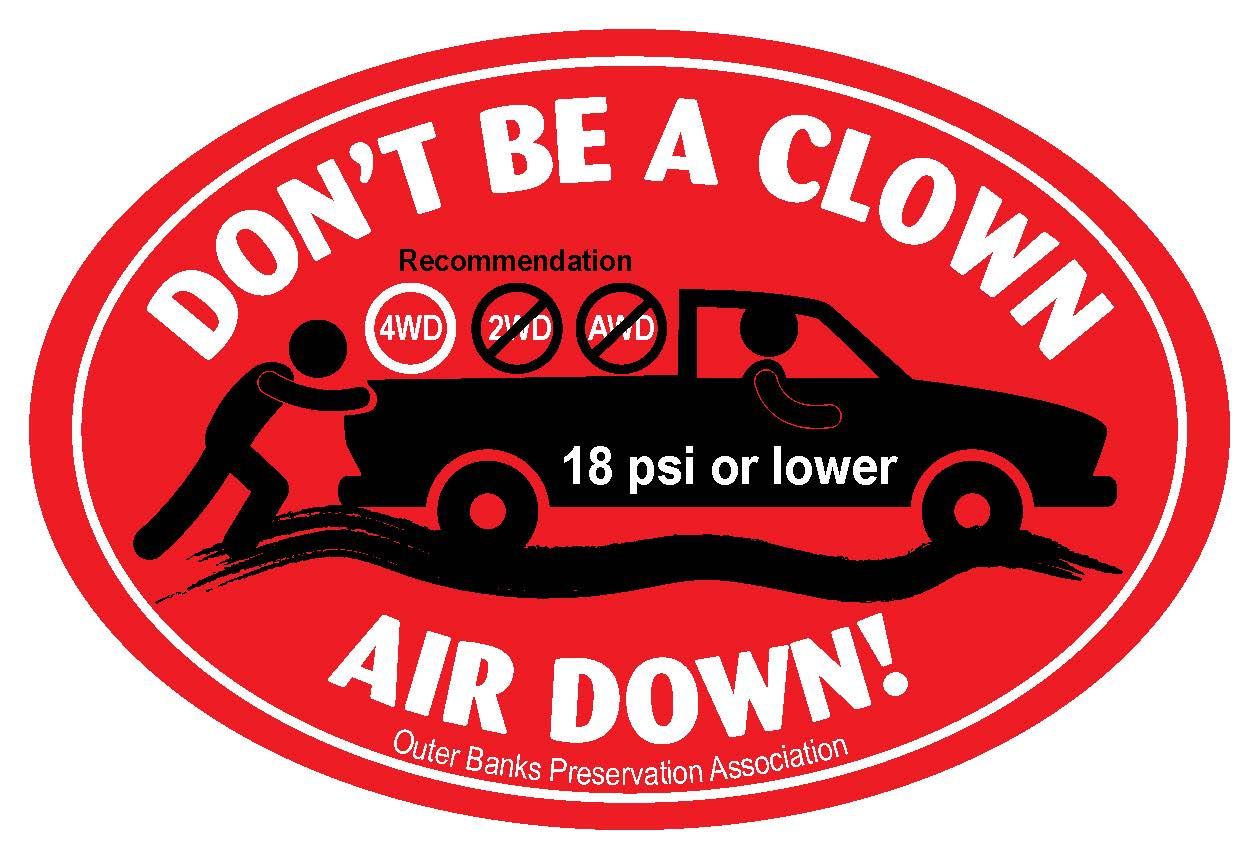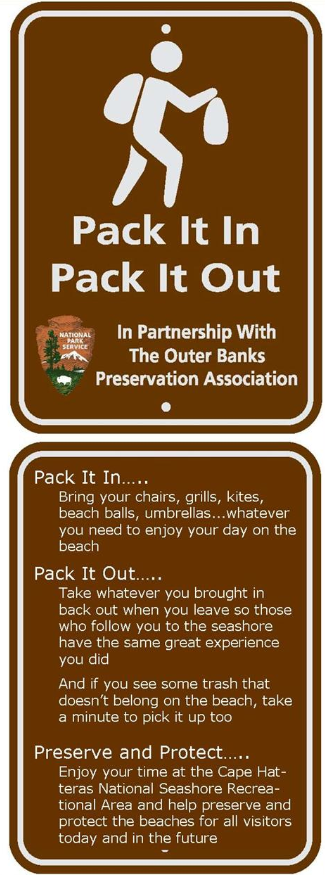Plan Approved to Modify Wildlife Protection Buffers
Cape Hatteras National Seashore
The National Park Service has approved a plan to modify wildlife protection buffers at Cape Hatteras National Seashore (Seashore) as required by Section 3057 of the Defense Authorization Act of Fiscal Year 2015, Public Law 113-291. (A law supported by NCBBA, CHAPA, OBPA, CHAC & others.)
The selected plan includes modified protection buffers and provides corridors around buffers for many species, including American oystercatchers, Wilson's plovers, piping plovers, colonial nesting waterbirds, and sea turtles. The plan maintains protections for wildlife along the seashore by augmenting the seashore's monitoring and on-the-ground management program. Additionally, the Seashore will be hosting workshops in the future to refine scientific monitoring and research towards improving adaptive management.
While it is expected that these changes will provide additional public access during wildlife nesting seasons, access to all areas of the Seashore at all times may not be possible, even with the decision to modify wildlife buffers; multiple species may nest in close proximity to each other and there are times where ORV corridors cannot be provided due to local geography. Parts of the selected alternative may be implemented during the summer of 2015, while the entire plan will be implemented in 2016, once additional staff are available to help intensively monitor and manage wildlife protection buffers and corridors.
The plan was approved by Stan Austin, the Director of the Southeast Region of the National Park Service, completing the National Environmental Policy Act and Environmental Assessment (EA) process which began earlier this year. The EA and FONSI were prepared in close coordination and consultation with the U.S. Fish and Wildlife Service and North Carolina Wildlife Resources Commission and in consideration of public input that was received during the public review period.
Superintendent David Hallac stated, “Wildlife protection buffers described under the plan's selected action will continue to protect wildlife species while providing additional flexibility to allow access to pedestrians and off road vehicles.”
A brief summary of the selected plan is as follows:
• For American oystercatcher: There will be an ORV corridor at the waterline during nesting, but only when (a) no alternate route is available, and (b) the nest is preferably at least 50 meters, but no less than 25 meters from the vehicle corridor. Buffer reductions and corridors will only be implemented with at least twice daily monitoring to ensure that the area can be managed appropriately when chicks hatch. Buffers for nests and unfledged chicks will stay the same as they are now.
• For piping plover and Wilson’s plover: The buffer during nesting will be reduced from 75 meters to 50 meters for both pedestrians and ORVs. For unfledged chicks, the buffer will be reduced from 300 meters to 100 meters (pedestrians) and from 1,000 meters to500 meters (ORVs). Where the standard 500 meter buffer blocks ORV access, the buffer may be reduced to no less than 200 meters to allow an access corridor along the shoreline. Buffer reductions when chicks are present will only be implemented with intensive monitoring by qualified staff.
• For least tern: The buffer for unfledged chicks will be reduced from 200 meters to 100 meters for both pedestrians and ORVs. The buffer during nesting would stay the same. Buffer reductions and corridors will only be implemented with at least twice daily monitoring to ensure that the area can be managed appropriately when chicks become mobile.
• For common tern, gull-billed tern, and black skimmer: The buffer for these species during nesting and when unfledged chicks are present will be reduced from 200 meters to180 meters for both pedestrians and ORVs.
• For sea turtles: The expansion buffer will be reduced to 30 meters (15 meters on either side), and, when light filtering fencing is installed, 5 meters minimum behind the nest. In the absence of an existing corridor, the shorter buffer behind the nest may allow ORVs to travel behind a nest where sufficient beach width exists. Where a turtle nest blocks access during the hatch window from one ORV area to another and no way around the nest exists, ORVs may drive in front of the nest only when qualified staff are regularly monitoring the nest for signs of hatching and available to remove ruts in front of nests on a daily basis.
For nests laid prior to June 1, the Seashore will retain the option of not expanding the buffer until day 60, unless signs of hatching prior to day 60 were detected. For nests laid after August 20, the Seashore will retain the option of not expanding the buffer for nests that block access to ORV passage.
On the rare occasion that a sea turtle nest is laid in such a location as to completely block ORV ramp access to and from an open section of beach where there is no ability to provide a corridor or other route around the nest, that nest may be relocated to an area that does not block access.
The buffers and corridors proposed in alternative B are contingent on NPS having the resources (funding and staff) to perform intensive or increased monitoring to protect species. In cases where resource management personnel document adverse impacts to resources greater than those described in this EA, the Seashore would retain the discretion to revert to the resource protection measures in the ORV FEIS.
Alternative B only makes changes related to the review and modification, as appropriate, of wildlife protection buffers and the designation of pedestrian and vehicle corridors around buffers. All other aspects of the ORV FEIS remain unchanged.
Later this summer, the Seashore will commence a public process to consider modifications to the final rule on off road vehicle management (2012). Specifically, the Seashore will consider changes to the final rule related to: morning openings of beaches, the time periods open for use of seasonal off road vehicle routes, and the size and location of vehicle free areas.
Additional information and a copy of the FONSI and related comments can be found here: http://parkplanning.nps.gov/document.cfm?parkID=358&projectID=56762&documentID=66763
Neither NCBBA nor OBPA or CHAPA fully support the published plan and will comment at a later time. We suggest that you read and familiarize your selves with the rules that will be implemented.


